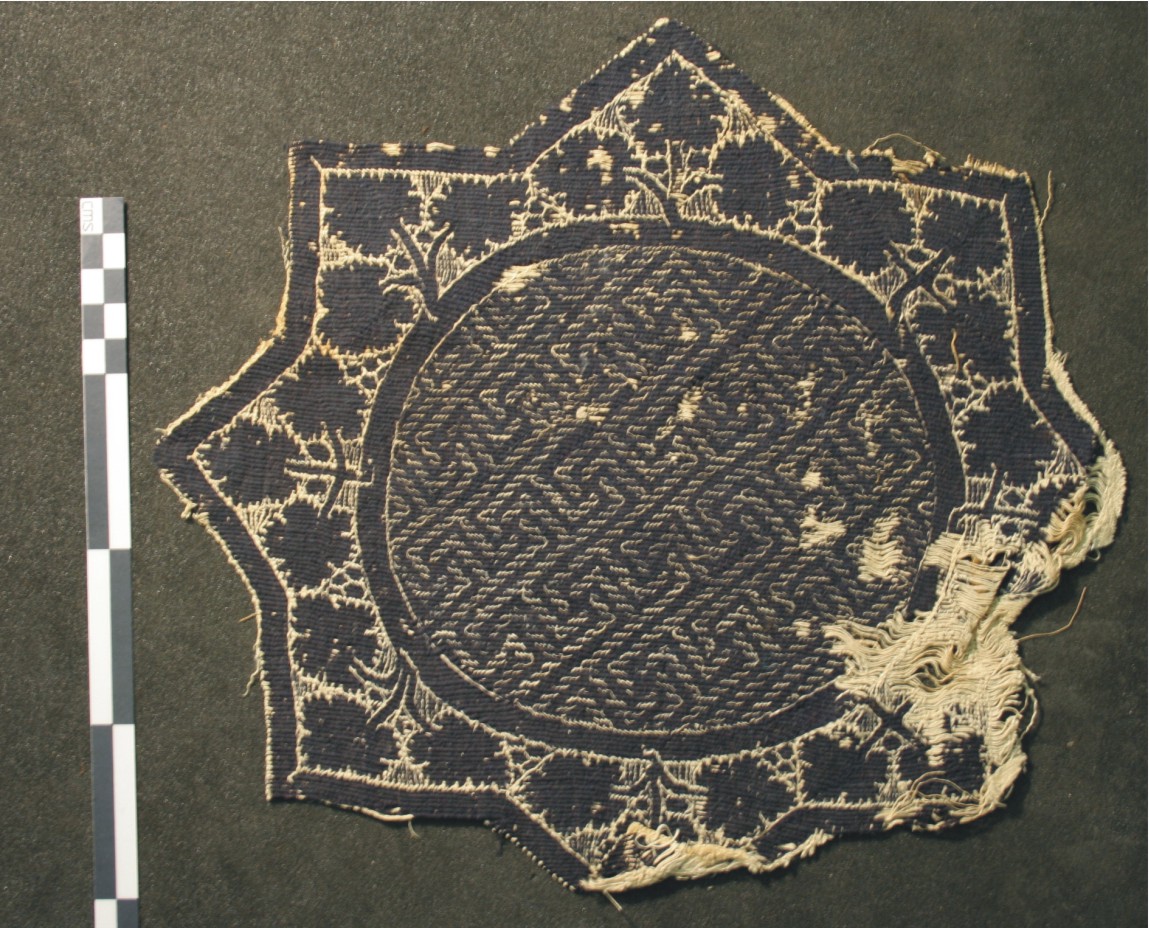EC606
EC606
 The points of the eight-pointed star enclose serrated leaf clusters, presumably vine leaves. A fine interlace pattern is in the centre. Such medallions would have been used to decorate tunics in the first millennium A.D. This is similar in design to the Late Roman medallions illustrated in Pritchard, 2004. It is also very similar to the medallion in Lewis 1969 p 29 pl. 21, which is dated to the 5th century AD.
The points of the eight-pointed star enclose serrated leaf clusters, presumably vine leaves. A fine interlace pattern is in the centre. Such medallions would have been used to decorate tunics in the first millennium A.D. This is similar in design to the Late Roman medallions illustrated in Pritchard, 2004. It is also very similar to the medallion in Lewis 1969 p 29 pl. 21, which is dated to the 5th century AD.
Diane Lee Carolle (1986, 86) believes that complex interlace patterns were believed to have protective powers against the evil eye as they force the eye to move backwards and forwards over the surface.
The eight-pointed star is a Byzantine motif of the fourth to sixth century AD (Lewis 1974, 171). Erikson (1997, 139) states that eight had a cosmological meaning of eternity and heavenly harmony and the eighth day was the day of Christ’s resurrection.
Vine leaves are found in Roman and Coptic art and belong to both the Dionysian and Christian religions (Erikson 1997, 101).
References
Carroll, D.L. 1988, Looms and Textiles of the Copts: First Millennium Egyptian Textiles in the Carl Austin Rietz Collection of the California Academy of Sciences. San Francisco: California Academy of Sciences.
Erikson, M. 1997. Textiles in Egypt 200-1500 AD in Swedish Museum Collections. Gothenburg: University of Gothenburg.
Lewis, S. 1969 Early Coptic Textiles. Stanford: Stanford University.
Lewis, S. 1974. ‘Review of ‘Coptic Textiles in the Brooklyn Museum’ by Deborah Thompson’ Journal of Egyptian Archaeology, 33, 1. 169-171.
Pritchard, F. 2004. Clothing Culture. Dress in Egypt in the First Millennium AD. Clothing from Egypt in the collection of the Whitworth Art Gallery, The University of Manchester. Manchester: University of Manchester.